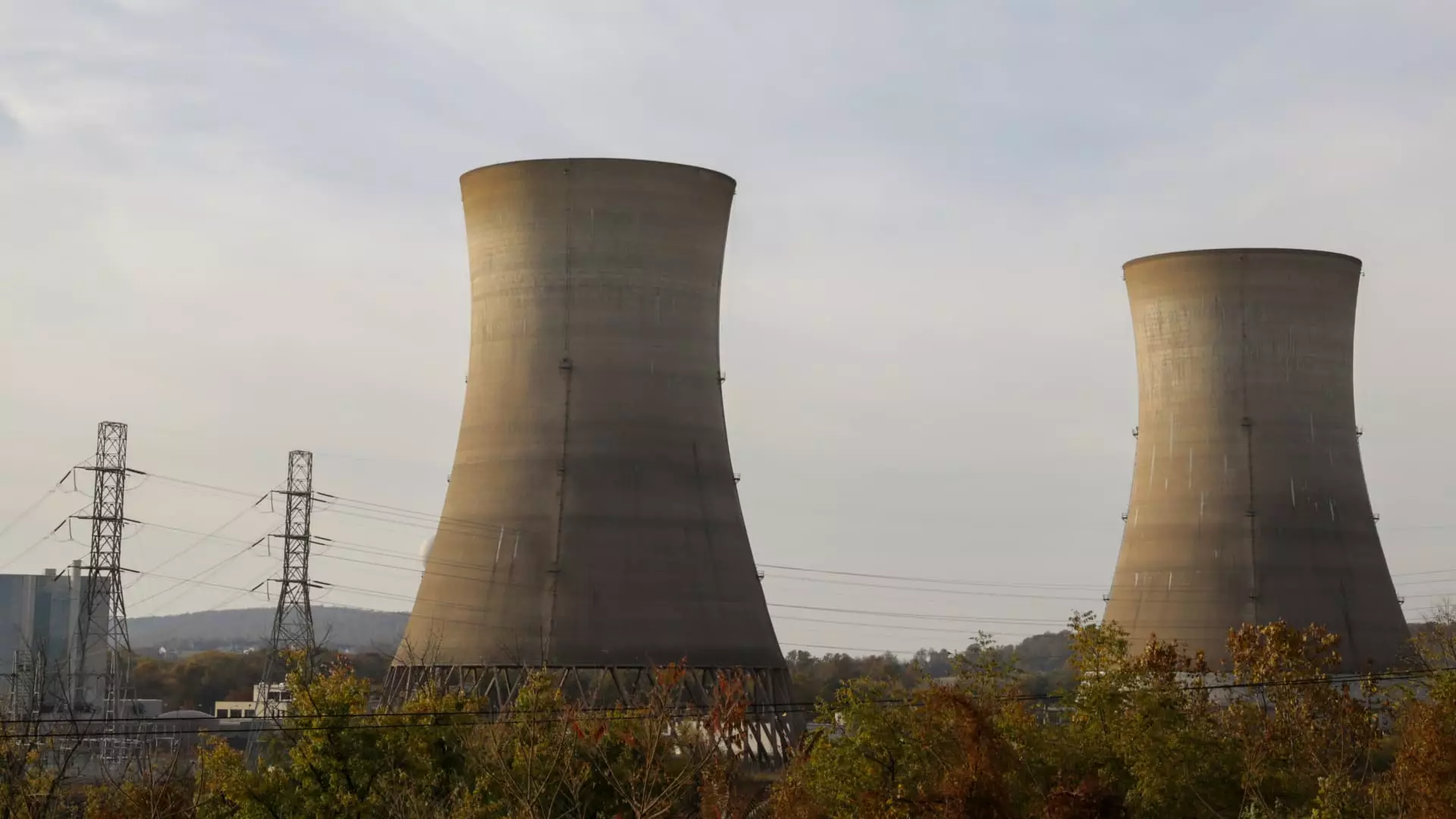In a world grappling with energy crises and climate change, the time for major transformations in our energy landscape is now. Uranium, long the controversial figure in the energy debate, is experiencing a renaissance, as articulated by John Ciampaglia, the CEO of Sprott Asset Management. The growing demand for energy—especially influenced by the insatiable requirements of AI-driven data centers—has breathed life into nuclear energy’s once-dim prospects. The data shows that uranium can no longer linger in the shadows; it has emerged as a critical player, riding a wave of optimism fueled by a shifting public perception toward greener energy alternatives.
Doubling Down on the Nuclear Narrative
John Ciampaglia’s advocacy for uranium isn’t merely vocal enthusiasm—it’s backed by substantial financial gains. The Sprott Physical Uranium Trust has surged, demonstrating impressive returns in a remarkably short time. As the world’s largest physical uranium fund, its performance is a resounding endorsement of uranium’s potential. Additionally, despite the shadow of previous disasters, enthusiasm for nuclear energy has grown globally. Ciampaglia notes that apart from Germany, countries are increasingly revisiting nuclear energy due to its reliability and zero greenhouse gas emissions. In a climate emergency driven by human activity, how can we ignore a source of energy so powerfully equipped to reduce our carbon footprint?
Challenges Looming on the Nuclear Horizon
Yet this “nuclear renaissance” is not without its apprehensions. One cannot overlook the notable obstacles that the industry faces. Jan van Eck, CEO of VanEck, raises a critical point: the time it takes to construct new nuclear facilities is a substantial hurdle. The swift rise in interest and investment in uranium does not neatly translate to immediate energy production. As dependency on stable power becomes a necessity for technologies like AI, patience is a luxury both investors and the general populace may struggle to afford. It is a precarious balancing act between urgent demand and the slow gears of infrastructure development.
A Political Quagmire: The Role of Leadership
The political climate surrounding nuclear energy adds yet another layer of complexity. The potential during the Trump administration for a more favorable regulatory environment for nuclear projects could accelerate developments significantly. However, this dependence on political whims raises questions about sustainability. Is it wise to build our energy future on governmental tides? The fleeting nature of political favor can lead to sudden shifts that leave long-term projects in a lurch. For the advocates of nuclear energy, the promise of reliable power must be carefully weighed against the risks associated with erratic political influences.
The Public Perception Shift: From Fear to Acceptance
Importantly, we must note a significant societal shift. The attitudes toward nuclear energy have transformed, with emerging recognition of its critical role in achieving energy security. The haunting memories of past nuclear incidents still linger, yet new advancements in technology provide a veil of safety that seems increasingly convincing. The environmental benefits of nuclear can no longer be ignored. In an era where oil supplies have destabilized entire regions, turning back to nuclear presents not only a strategic advantage but also a path towards sustainable energy independence.
The Path Ahead: A Future Entwined with Uranium?
As we embark on this new chapter in the energy discourse, the allure of uranium is undeniable. With improved safety protocols, innovative technologies, and a demand for reliability, nuclear energy presents itself as a beacon of hope amidst the chaos of climate change and geopolitical strife. However, as we embrace this shift, we must remain vigilant, questioning whether we can navigate the complexities of nuclear energy effectively. Acknowledging the excitement while preparing for potential pitfalls will be essential as we position uranium not just as a reactionary resource, but as a cornerstone of a forward-thinking energy strategy.


Leave a Reply